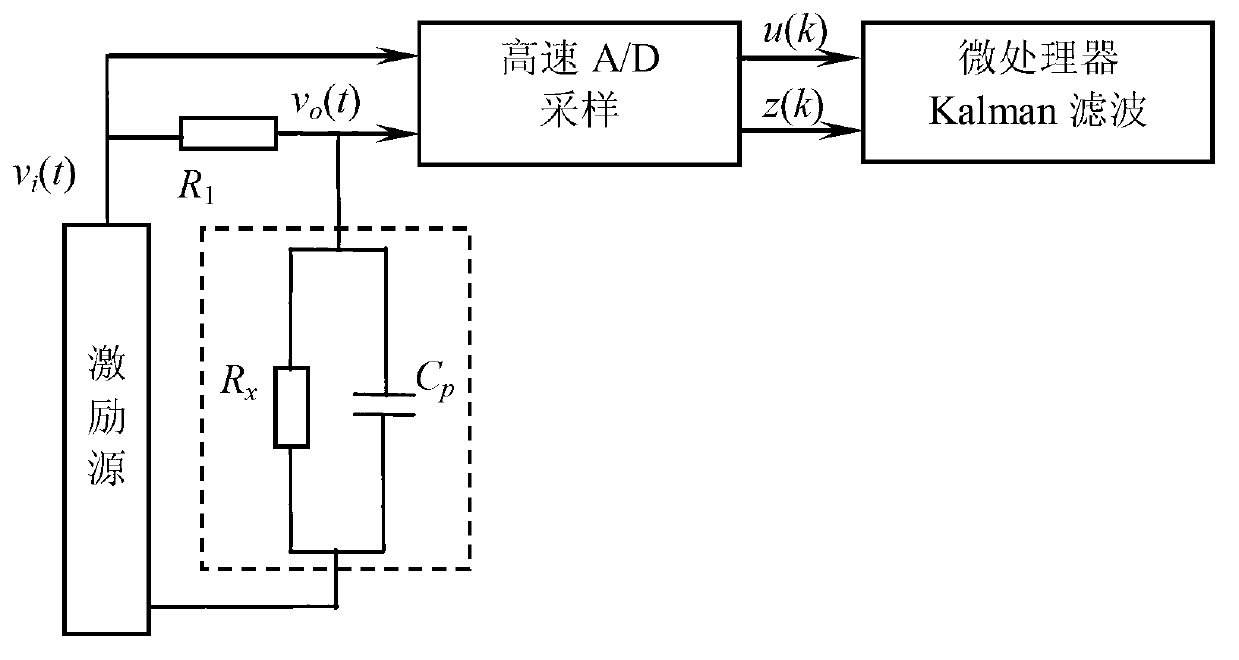Dynamic filter estimate method of conductivity-order resistance capacitance system parameters
A technology of dynamic filtering and system parameters, applied in the direction of fluid resistance measurement, etc., can solve the problems of uncertain number of iterations, loss of accuracy of multivariate polynomial fitting, weakening the influence of uncertainty, etc.
- Summary
- Abstract
- Description
- Claims
- Application Information
AI Technical Summary
Problems solved by technology
Method used
Image
Examples
Embodiment Construction
[0039] The specific embodiments of the present invention will be described in detail below in conjunction with the technical solutions and accompanying drawings.
[0040] According to the specific time-varying conditions of the resistance-capacitance parameters in practical applications, the length of the small segment is set, and usually it should not be too large on the basis of ensuring the convergence of the filter.
[0041] Using a sinusoidal excitation signal v with a certain frequency i (t) Excite the conductance cell system, and its response signal is v o (t). According to the sampling period T s respectively for v i (t) and v o (t) Sampling by high-speed A / D to obtain sampling signals u(k) and z(k), k=1, 2,....
[0042] While sampling, start the Kalman filter formula (11)-(15), and after N steps of recursive calculation, the solution resistance R in the first hour can be obtained from formula (16) and formula (17) x and lead distributed capacitance C p estimate...
PUM
 Login to View More
Login to View More Abstract
Description
Claims
Application Information
 Login to View More
Login to View More - R&D
- Intellectual Property
- Life Sciences
- Materials
- Tech Scout
- Unparalleled Data Quality
- Higher Quality Content
- 60% Fewer Hallucinations
Browse by: Latest US Patents, China's latest patents, Technical Efficacy Thesaurus, Application Domain, Technology Topic, Popular Technical Reports.
© 2025 PatSnap. All rights reserved.Legal|Privacy policy|Modern Slavery Act Transparency Statement|Sitemap|About US| Contact US: help@patsnap.com



